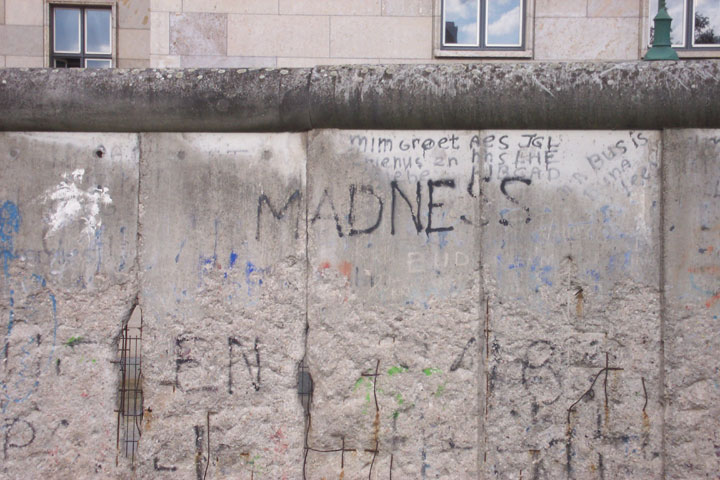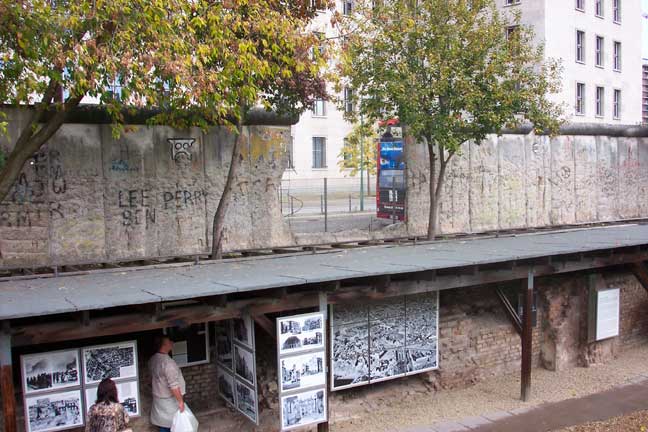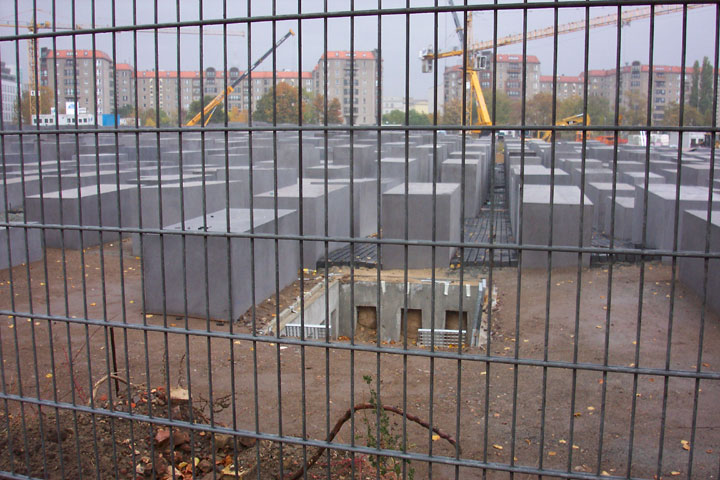Ruminations
from my trip to Warsaw and Berlin, October, 2004
(With
photos below)
Eugene
Halton
Memory and Oblivion in Berlin
In
the fall of 1989, a month before it fell, I suggested at a conference in
Germany that some of the Berlin Wall, including specifically the area of
Hitler’s bunker and other prominent sections from Cold War history, be
designated as a symbol of twentieth-century Germany. My reasoning was that
although the Berlin Wall was a product of the Cold War which testifies to
the failures of Communism, it holds a broader significance as well. The fact
that Hitler’s final bunker, a mound buried within the wall, out of which
his body emerged to be cremated, struck me as a fantastic reality from some
sardonic Disneyland--almost like the ancient Assyrian practice of burying
enemies within the city’s wall. This site also addressed
twentieth-century hubris: “Here is German defeat, resulting from
unbridled arrogance,” just as other portions of the wall signify the
divided post-war Germany and the continuing battle of totalitarianism versus
democracy. The cold war virtually ended on top of the wall, at least in
memorable images, in the celebrations.
For these
reasons the wall, even more than the Kaiser Wilhelm Gedankskirche
(a church deliberately left in partial ruins), seemed to me to encompass the
broadest span of twentieth-century Germany. Fifteen years later, in October, 2004, I returned to
Berlin to discover that the city has left at least one full
city block of the wall intact (and individual sections elsewhere), and
excavated a level down next to it. There was an outdoor photographic exhibit in
the excavated section, titled “The Topography of Terror.” One walks
the history of the Nazi times in Berlin, while occasionally looking up to the wall layer above,
the literal topography of terror.
Berlin did something far better than I could have imagined.
A couple of blocks away I found the site of Hitler’s bunker, now just a
flat empty lot, unmarked, construction going on around it. As I walked from the
“Topography of Terror” exhibit and wall toward it, ominous black
clouds and wind suddenly materialized, a hard rain began, and I felt the
strange topography of nicht
and nowhere, of dead zone zombie history where that war ended and the cold war
clinched its vice-grip on the Fatherland. But something more was in the process
of manifesting. I realized that in two more years the last under-earth of the Führer will probably be somebody else’s office
building, obliterate, as it should be. Then a couple of blocks further, as I
walked in the pouring rain, I came upon a huge field of stone monoliths in
construction, thousands in lines, forming a sculptural cemetery, marking the
Holocaust. So much for Nazi “blut und boden,” “blood and earth.” This was a
kind of inversion of the final solution, a strange
reverse of Hitler’s demented vision of a thousand year Reich centered in Berlin. Steinenfeld (Field
of Stones), was now bodying forth as a city of
the dead, of Jews finally given that Berlin earth as memory ground, while a few blocks away
Hitler’s nameless, placeless bunker, was enroute
to oblivion.
CONCRETE TRIPTYCH OF THE MODERN ERA

THE WALL, DIAGNOSED

TOPOGRAPHY OF TERROR

BUILDING OF THE BERLIN HOLOCAUST MEMORIAL, OCT.,
2004
Eugene
Halton





